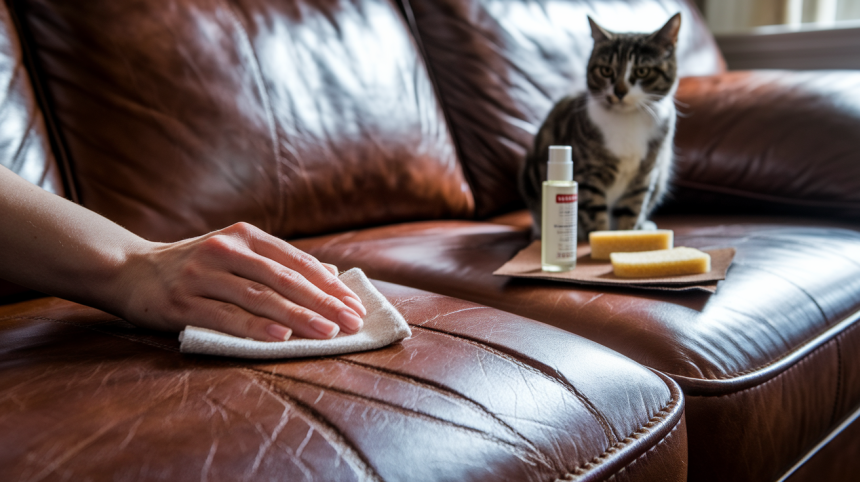Leather furniture represents a significant investment—one that can be shredded to pieces in mere minutes by your feline friend’s sharp claws.
The distinctive sound of claws against leather strikes fear into the hearts of cat owners everywhere, signaling impending damage to prized sofas, chairs, and ottomans.
Yet, this natural scratching behavior doesn’t mean you must choose between your cat and your furniture.
Effective strategies exist to redirect your cat’s scratching instincts while preserving your leather pieces.
This guide offers practical solutions to prevent cats from targeting leather, balancing their natural instincts with your desire for intact furniture.
Understanding Why Cats Scratch
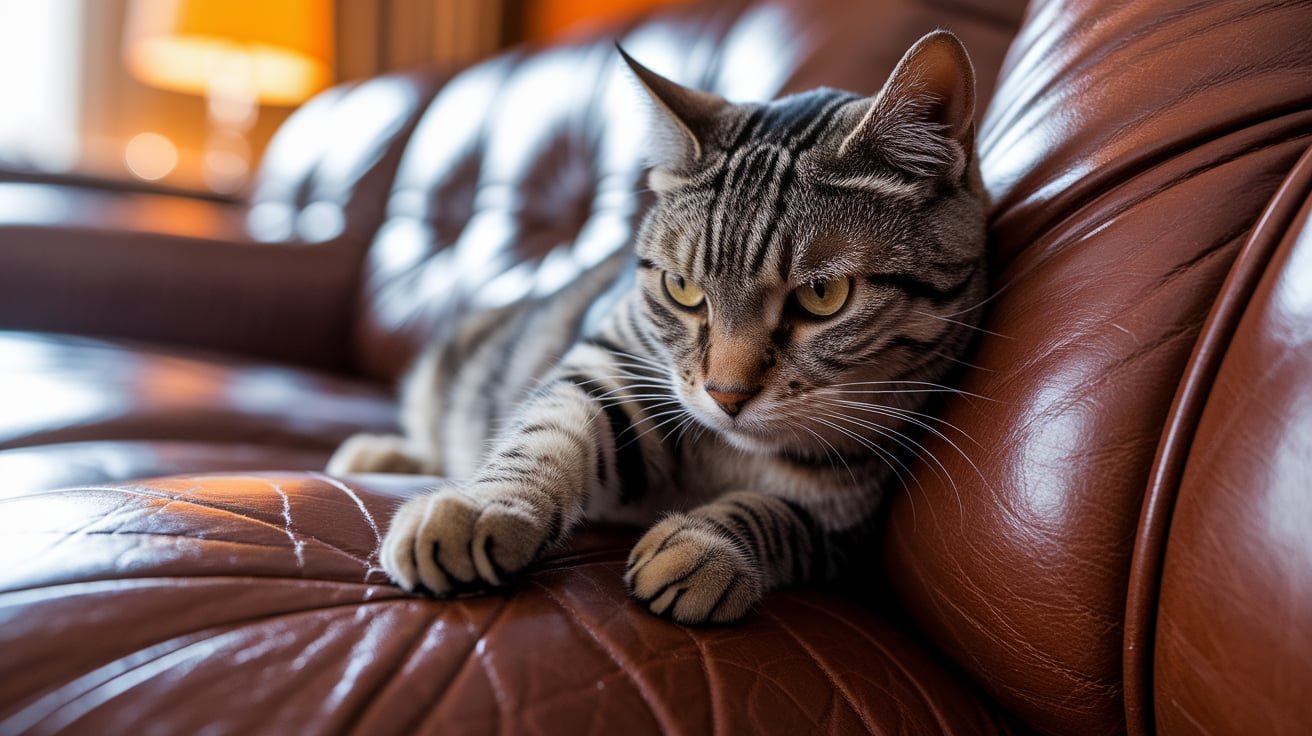
Cats scratch because it’s built into their DNA, not because they want to ruin your furniture.
When your cat scratches, they’re actually marking their territory with scent glands in their paws, keeping their claws sharp and healthy, stretching their back muscles, and relieving stress.
Leather furniture is particularly tempting for cats!
They love leather because it feels nice and firm under their claws, the texture grips perfectly as they scratch, it makes a satisfying sound, and its natural smell is interesting to them.
Preventive Measures to Protect Your Furniture
Taking a few simple steps can help protect your furniture and keep it looking its best for longer. Here are some easy measures you can try to safeguard your furniture.
Provide Appropriate Scratching Alternatives
The best defense against leather furniture destruction is giving your cat something better to scratch.
Cats have preferences, so offer options:
- Tall, sturdy vertical posts (at least 3 feet high) for full stretching.
- Horizontal scratch pads are for cats who prefer scratching low.
- Different materials – sisal rope, cardboard, carpet – to see what your cat prefers.
Place scratching posts right next to the furniture your cat targets. When you catch them approaching the leather, gently redirect them to the proper scratching surface.
Reward them with treats and praise when they use the right spot!
Use Deterrents To Keep Cats Away
- Use diluted citrus sprays (lemon or orange) on the edges of leather furniture.
- Try commercial cat repellent sprays from pet stores.
- Place cotton balls with essential oils (citrus, lavender, eucalyptus) near the furniture, keeping them out of your cat’s reach.
- Apply double-sided tape to the areas your cat targets (cats dislike sticky paws).
- Wrap aluminum foil around the arms of the furniture.
- Place plastic carpet runners, bumpy side up, on or around the furniture.
- Use furniture covers designed to resist scratching.
Regular Nail Maintenance
Keeping your cat’s claws trimmed is a simple yet effective way to minimize furniture damage.
Aim to clip just the sharp tips every 2-3 weeks using proper pet nail clippers. Always reward your cat with treats afterward to create positive associations.
For particularly persistent scratchers, consider soft plastic nail caps that glue onto claws or schedule professional grooming if your cat resists home nail care.
Behavioral Training: Teaching Your Cat to Protect Furniture

Training your cat away from leather furniture requires patience and consistency.
The most effective approach combines positive reinforcement with environmental enrichment to satisfy your cat’s natural instincts.
When your cat uses their scratching post instead of your sofa, immediately reward them with treats, praise, or pets—whatever motivates them most.
Consistency is crucial; reward every appropriate scratching instance you witness during the training period.
Some owners find success with clicker training, where you click the moment your cat scratches appropriately, then immediately provide a treat.
Environment: Creating a Stimulating Space for Your Cat
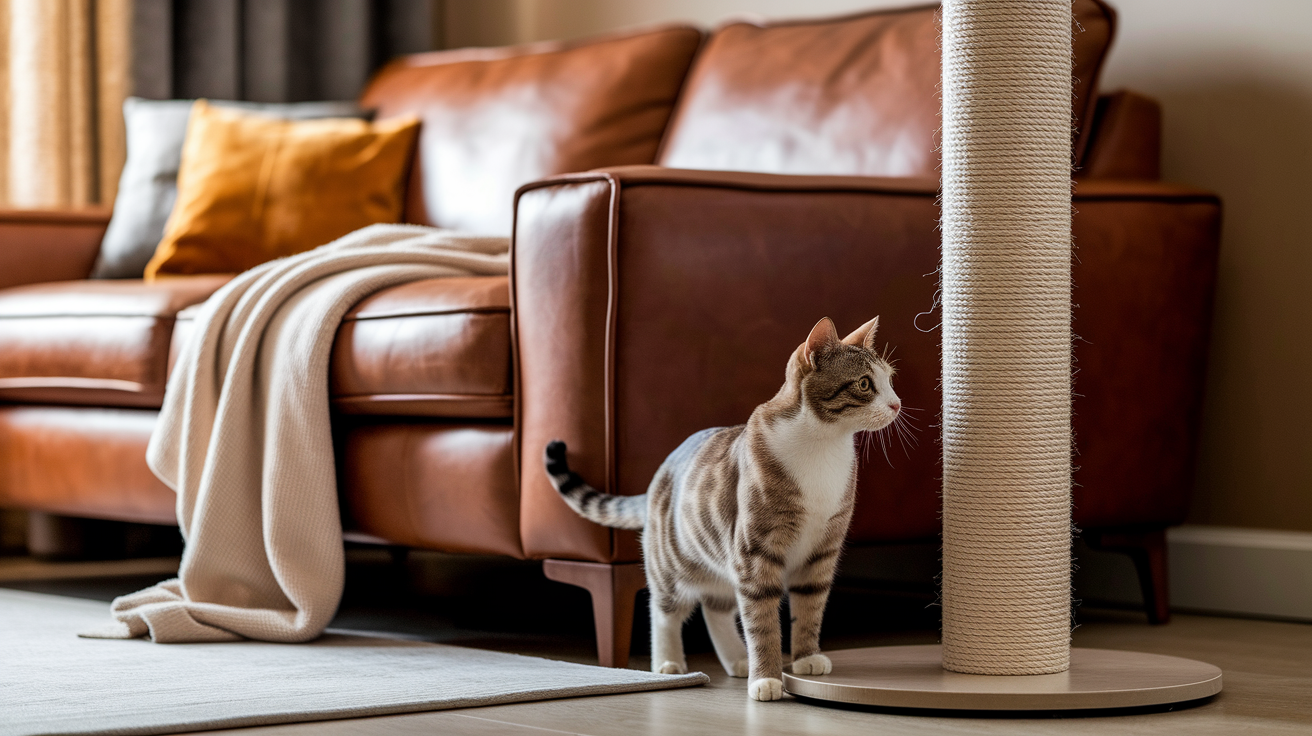
1. Interactive Toys
-
- Provide toys that mimic prey movement (feathers, mice, balls).
- Invest in puzzle feeders that dispense treats during play.
- Rotate toys weekly to maintain interest.
2. Regular Playtime
-
- Schedule 2-3 daily play sessions of 10-15 minutes each.
- Focus on “hunt-catch-kill” sequences that satisfy hunting instincts.
- Time play sessions before meals and evening hours.
3. Vertical Space
-
- Install cat trees or shelves for climbing and perching.
- Place perches near windows for environmental viewing.
- Create cozy hideaways at various heights.
4. Mental Stimulation
-
- Hide treats around the home for “hunting” opportunities.
- Consider food puzzles that make cats work for their meals.
- Leave cat-safe videos playing when you’re away.
How to Repair Cat Scratches on Your Leather Sofa?
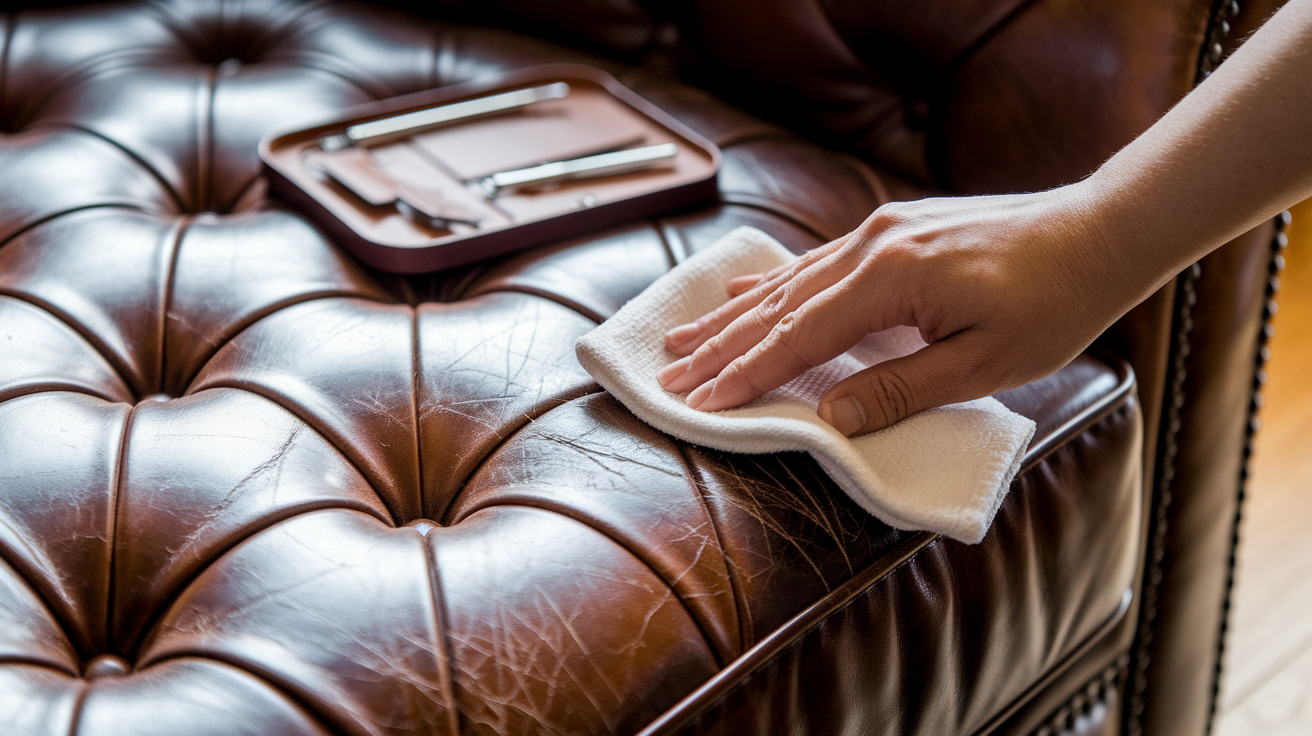
When your cat has already left their mark on your leather furniture, you can often restore it with the right approach.
The repair method depends on how deep the scratches are:
| Scratch Type | Materials Needed | Repair Steps |
|---|---|---|
| Light Surface Scratches | Leather cleaner, conditioner, matching balm |
1. Clean the area with leather cleaner. 2. Apply conditioner and buff gently. 3. Use matching recoloring balm. 4. Buff with a soft cloth until blended. |
| Medium Scratches | Leather repair kit with color match |
1. Clean thoroughly. 2. Apply repair compound. 3. Use grain paper to recreate texture. 4. Seal with leather conditioner. |
| Deep Gouges | Leather filler, patch kit, or professional help |
1. Fill deep areas with leather compound. 2. Build in thin layers. 3. Match color carefully. 4. Consider professional help for severe damage. |
Most leather repair kits cost between $15-30 and can address multiple scratches.
For the best results, test products in an inconspicuous spot first.
While DIY repairs can significantly improve appearance, very deep or extensive damage might require professional restoration services.
Why You Should Avoid Declawing Your Cat?
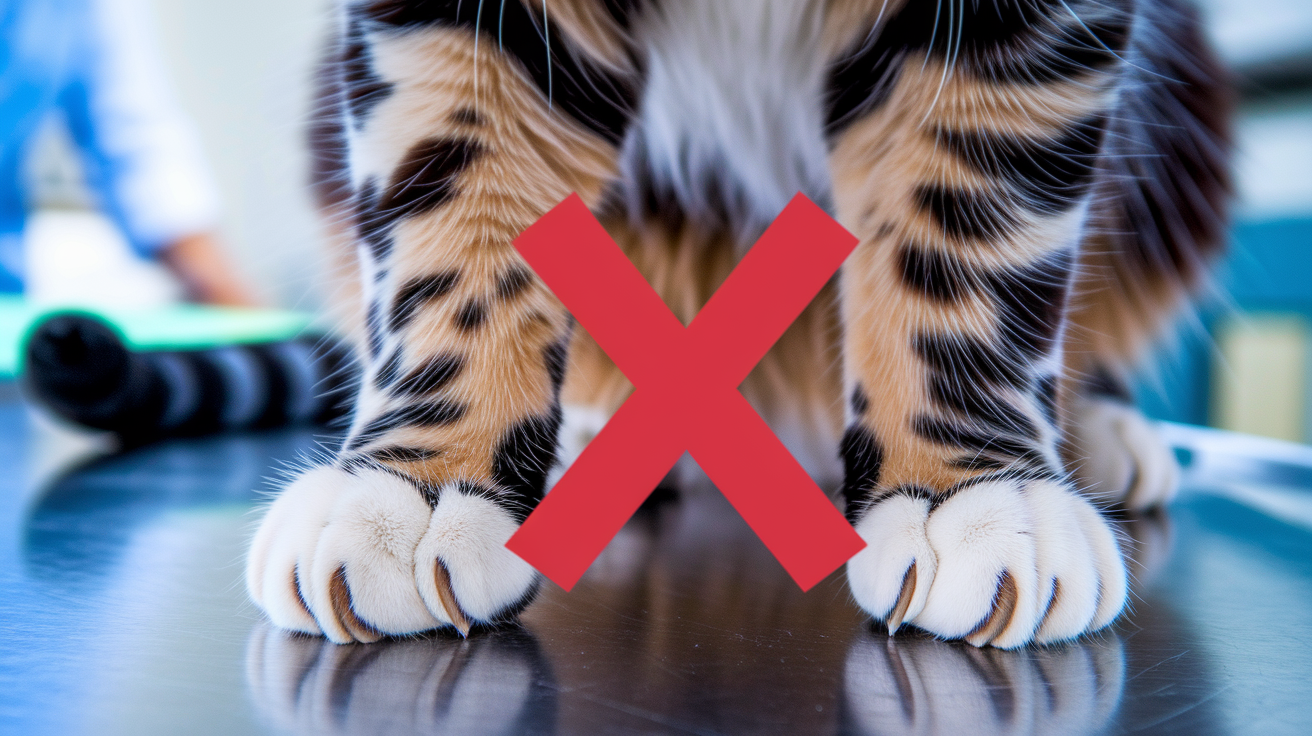
Declawing is not a humane solution to furniture scratching problems.
This surgical procedure involves amputating the last bone of each toe—equivalent to removing a human’s fingertips at the first knuckle.
Cats often develop serious complications, including chronic pain, altered gait, behavior problems, and reluctance to use the litter box after declawing.
The procedure is completely banned in over 42 countries worldwide and in several U.S. states including New York, Maryland, and California.
More cities and states are introducing legislation against this practice every year.
Instead of declawing, focus on the humane alternatives mentioned earlier—these more ethical approaches will benefit your furniture and your cat’s well-being.
Wrapping Up
Protecting your leather furniture from feline destruction requires multiple approaches that acknowledge your cat’s natural behaviors while safeguarding your investment.
By combining proper scratching alternatives, consistent training, deterrents, and environmental enrichment, you can create harmony between your cat’s needs and your home’s aesthetics.
Remember that patience is essential—behavior modification takes time, but the results of maintaining both happy cats and pristine leather are well worth the effort.
With the right strategies in place, your leather furniture can remain elegant for years to come, even in a cat-friendly household.
Share your experiences in the comments below—your insights might be exactly what another frustrated cat owner needs!

